
Contact

Home

Barrier Miner (Broken Hill, NSW)
Date: July 22, 1904
Page Number: 2
The petrified body of a young aboriginal girl has been found about 3ft. from the surface in Waterfall Gully, near Adelaide. The body measures 51in., and even the nails of the hands and feet are perfect. The body will probably be secured for the Museum.
A BEAUMONT MYSTERY.
ALLEGED HUMAN FOSSIL UNEARTHED.
SCEPTICAL SCIENTISTS.
The Register (Adelaide, SA)
Date: July 25, 1904
Page Number: 4
During the past few days the minds of several of the scientists engaged at the Adelaide University have been exercised over a curious discovery that was recently made at Beaumont, the picturesque hamlet above Burnside which marks the junction of the Adelaide plains with the hills. The scene of the discovery is the vineyard of the late Mr. Robert Frew— a vineyard that was planted nearly 50 years ago, and is now leased by Mr. Peter Salotti, a hard working Italian, who has a decided stake in the country in the shape of a winery at Fullarton and a lollie shop in Hindley street, Adelaide. If the "find" is a genuine one it is of startling importance to science; if otherwise, it is still a profound and interesting mystery. One day last week an English employe of Mr. Salotti was grubbing the stump of an old gumtree on the edge of the vineyard, which clothes the side of a hill, when he unearthed what some people who have inspected it claim to be no less a phenomenon than the petrified body of an aboriginal girl. It was lying on its back with the soles of the feet resting on the ground, the knees doubled up, and the hands folded across the abdomen. That the figure had been buried for a considerable time there is not the slightest doubt. It is covered with a crust of travertine limestone, and where this is broken, away the underlying material has all the appearance of a very fine marble. The surface is not smooth, but is indented with pits like those which would be produced by the action of weather. The figure, 4 - ft. 3 in. long, is extremely solid and heavy, and rings like a bell when struck below the limestone crust.
—Where the Figure was Found.—
How did the figure come there? When the late Mr. Robert Frew took possession of the land nearly 50 years ago, it was heavily timbered virgin country, and he, his family, and the Italian have been the only occupiers of the property since South Australia was civilized. A son of the deceased (Mr. D. F. Frew, of Victoria Park) averts that his father never possessed any marble figures, and that the discovery is as great a mystery to him as to anybody else. Mr. Peter Salotti, who has been at Beaumont for only four years, is also extremely unlikely to be connected with any scheme to hoodwink possible investigators. He has been in South Australia for 31 years, and fled from Italy because his father wanted him to join the priesthood. His father, by the way, died recently, and left £22,000, of which Mr. Salotti gets a share. If the figure is only a piece of buried statuary the object of its interment is exceedingly puzzling. It lay 3 ft. below the surface, and an extraordinary fact is that it was well under one of the main roots of the gumtree stump, the root being nearly a foot in diameter. What would anybody's object be in burying in this peaceful locality what is a valuable thing, even if it is only a piece of marble statuary? If it was intended for a hoax the perpetrator must have looked a long way ahead, for it is one that could not be successfully worked until the lapse of many years to allow of the necessary encrustation taking place.
—A Visit to Beaumont.—
Hard as it is to answer the foregoing suggestions, the theory that a replacement or a cast of an aboriginal female body has taken place is infinitely more incredible. It is even more unlikely than the discovery of home-made mummies in South Australia. However, Mr. W. Howchin (lecturer on geology and paleontology at the Adelaide University) and Dr. W. G. Woolnough (lecturer on mineralogy and petrology) thought the find of sufficient importance to make a personal inspection of the locality on Saturday morning. They were accompanied by two pressmen, and were met at the Burnside train terminus by the Italian, who conducted the party for about a mile into the hills past the ruins of an early Congregational Chapel. Sir Samuel Davenport's property is the nearest place of note to the interesting ''tomb." Mr. Frew's house must have been considered quite an ornate place in its day, but the garden is now in the grip of the soursobs. Mr. Salotti's industry, however, is reflected in the vineyard. The Italian obligingly prostrated himself in the sepulchre to illustrate the lay of the figure when unearthed, but the possibilities of its being a human fossil received a rude shock in the minds of the scientists and scribblers alike.
—"Why Scientists are Puzzled."—
The conditions disclosed by the excavation are just about as diametrically opposite to those in which petrification or replacement could occur as it is possible to get them. The "mummy," to use a handy but not scientifically correct term, was buried in the subsoil, and surrounded by a porous travertine. Under these conditions it would be within the zone of circulating water, and any organic material would be rapidly removed, while the stuff surrounding it was not at all suitable for preserving any impression. Whatever it is, it may be taken for almost a certainty that it was not formed where it was found. There is not a single example where any human being or any animal has been preserved in perfect form either in the actual substance or by replacement, or by infiltration of a cast, in circumstances anything like those in which the Beaumont discovery was made. Perfect preservation, however, is quite possible under certain conditions. For instance, in Northern Siberia the remains of extinct animals have been found frozen into the mud, and the actual substance well preserved. In a specially warm summer wolves have been able to get at mammoths and devour flesh thousands of years old. Again at Pompeii, to repeat well-known facts, human beings and animals were overwhelmed by torrents of liquid mud, which set hard and preserved only their forms— not the actual substance. But as a rule one does not find that sort of thing up against soursobs. Animal tissue itself has not been preserved in the way mentioned, although vegetable matter lends itself readily enough to the process. The only parts of animals that have been preserved as fossils under ordinary conditions are the hard portions, such as the bones and teeth, and very rarely impressions of the skin.
—How the Mystery Could be Solved.—
Notwithstanding the improbabilities of the fossil theory, Mr. Howchin and Dr. Woolnough would not express themselves more decidedly on the point than to say that they were "extremely sceptical." They wisely enough want more investigation before expressing a final and definite opinion. The doubt whether a fossil has been unearthed could quickly be settled by taking out a thin section from one of the limbs. If bone is present that would be proof positive of fossilization; if the material in solid marble throughout the discovery is reduced simply to a mystery stripped of all scientific attraction. If the figure is genuinely due to the filling of a hollow space with crystalline carbonate of lime definite structures resembling the arrangement of materials in a mineral vein would appear under the microscope, or even to the naked eye. Unfortunately Mr. Peter Salotti is not at present inclined to facilitate a clearing up of the scientific part of the mystery. His lease of the vineyard contains no clause as to the reservation of "mummies" so that the figure is his own property, and he is not taking any risks. The Italian has already been offered £100 for the specimen, and he objects to any section cutting, the result of which might mean everything or nothing to him.
—A Colonial Venus.—
Mr. Salotti carted the figure to his lollie shop, 150 Hindley street, soon after it was unearthed, and he gave our party permission to inspect it. We found on arrival at the place that the "young lady" was being guarded like gold by the womenfolk belonging to ??? and the adjoining shops, and they took not a little convincing concerning our authority to call. The main entrance was under lock and key, the "chamber of horrors" was barricaded by two stout boards, and as further protection against powers and principalities and burglars the prostrate figure was swathed in an old blanket. Personal inspection increased one's doubts. The form seems almost too perfect —more like that of a colonial Venus than of a South Australian native girl; in fact, when the North terrace statue is struck by lightning the "belle of Beaumont" might take her place on the pedestal. Then again, there is too much indication of hair on the head, and the backbone has the natural curve, which, of course, would be lost in a dead body, while the abdomen is too fully developed. The toenails and the finger nails are perfectly shown. Suddenly the fossiliferous possibilities appealed to one of the party, who uttered a few lines of Horace Smith's address to a mummy:—
Still silent, uncommunicative elf?
Art sworn to secrecy? then keep thy vows;
But, prythee, tell us something of thyself,
Reveal the secrets of thy prison house!
Since in the world of spirits thou hast slumber'd,
What hast thou seen, what strange adventures numbered?
Before the "mummy" could reply a child came into the lollie store and called out "Shop! I want some stickjaw." This interruption seemed to clear the atmosphere of all sentiment, and, like every other self-respecting mummy would do in similar circumstances, this one held, its peace. The audience with the limestone-trimmed lady came to, an abrupt ending when a pressman reminded the company that the aboriginals used to bury their dead in trees, so that it was not likely that this body could have dropped 3 ft. below the surface of the earth.

University of Adelaide
Established in 1874, it is the third oldest university in Australia.


Howchin, Walter (1845–1937)
Cultural Heritage: English
Religious Influence: Methodist
Academic, geologist, Methodist minister.

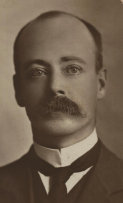
Woolnough, Walter George (1876–1958)
Cultural Heritage: English, American
Religious Influence: Wesleyan
Academic, geologist, public servant.

"Garden of Fugitives", Pompeii.
Giuseppe Fiorelli took charge of the excavations in 1860. During early excavations of the site,
occasional voids in the ash layer had been found that contained human remains. It was Fiorelli who realized these were spaces left
by the decomposed bodies and so devised the technique of injecting plaster into them to recreate the forms of Vesuvius's victims.
This technique is still in use today, with a clear resin now used instead of plaster because it is more durable, and does not destroy
the bones, allowing further analysis.

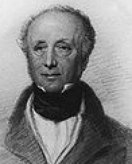
Horace Smith (poet)

FOSSIL OR--WHAT?
THE VINEYARD MUMMY
SOME CURIOUS FACTS
The Register (Adelaide, SA)
Date: July 26, 1904
Page Number: 4
Further enquiries made on Monday in connection with the unearthing of a marble figure at the Beaumont Vineyard revealed a remarkable string of coincidences from which the public may draw their own conclusions. It is quite possible that the figure had not been buried so long as is suggested by a cursory glance at the "mummy,'' and it has been suggested that it might well take its place alongside that, remarkable historical discovery known as “The Cardiff Giant." The scepticism of the University scientists from the first was significant.
On June 4 last there were in Adelaide two Italians named Sala (father and son), who said to be close relations of the celebrated London journalist, the late George Augustas Sala. They follow the trade of marble pointers, and hewed out in the rough the statue of John McDouall Stuart for the sculptor, (Mr. White). On the date named they purchased at an Adelaide establishment a piece of New South Wales marble at a cost of £2 4/6. The owner of it had started to fashion it into a tombstone, but the Salas were so anxious to get this block that they offered to pay for the work that had been done on it. They said they wanted it for doorsteps. The dimensions of this piece of marble tally almost exactly with the measurements of the figure now lying in state in Hindley Street at Peter Salotti's shop. A few days later one of the Salas waited upon a resident of Adelaide, who was formerly in the monumental mason business, and borrowed tools for marble cutting. The man said he wanted to make busts for Mr. H. L. Jackman, the well-known architect. That gentleman asserts that he never gave the Salas any work of the kind. In agreeing to lend the tools the ex-monumental mason was discreet enough to demand a receipt, and Sala said he would send somebody else for them. In due course a woman arrived, and took away one drill, nine bits and one steel bow, and signed the receipt "Mrs. C. Salotti." On Monday she was identified at Hindley Street by the owner of the tools as the wife of Peter Salotti, the lessee of the vineyard, where the alleged petrified aboriginal figure was unearthed. The Salas also bought copiously of an oil that is used in marble work, and is an effective stain. The elder of these two Italians is now in Sydney, but the younger has remained in Adelaide.
To continue the chain of coincidences it may be mentioned on the authority of Mr. F. F. Wholohan head master of the Marryatville State School, which is within easy distance of Beaumont, that the old Congregational Chapel, near to Salotti's vineyard, has been a favourite habitation of Italians, and Mr. Wholohan has often seen them peddling plaster figures in the district. On Monday about half a dozen Adelaide doctors paid their respects to the "mummy" girl in Hindley street, and were not at all impressed by the fossil theory. One of them remarked to a representative of The Register:—
"I was satisfied that it was not it genuine fossil so soon as I arrived at the shop. Did you notice the ornamental arms and busts that adorn the place? They struck me us belonging to a man of artistic tastes, and probably some skill as a sculptor. An examination of the figure itself quite satisfied me that it is not what some claim it to be, apart altogether from the impossibility of petrifaction suggested by the geological surroundings at Beaumont. A lady at the shop gave me the first refusal of the figure at £150. I offered her £1. She did not close, and I advised her to take a tenner if she could get it."
Mr. H. L. Jackman and the ex-monumental mason who lent the tools to one of the Salas, accompanied a reporter to Salotti's shop. The same difficulty as on Saturday in obtaining an audience with the "mummy" was experienced. The mason carried a testing tool, and used it on the figure, and Mrs. Salotti voluntarily named tool, he was firm in the belief that corroding acids had been used on the figure. Mr. Jackman, who has had a lot of experience in marble work, was emphatic in condemning "the utter absurdity" of the fossil idea. "I will stake my reputation on it," he said, "that the so-called pits on the figure are nothing but chisel marks, and I will undertake to remove the whole of the alleged limestone crust with anything from a toothbrush to a scrubbing brush. In my opinion, there is more clay and oil than limestone in the crust. The Italians are wonderfully clever and quick at this kind of work, and I see no reason why the figure should have been buried more than a few days."
Mrs. Salotti is a thorough believer in the "mummy" theory, and is bland to an extreme. She insists on remaining in the "chamber of horrors" while any inspection is going on, and speaks enthusiastically of the genuineness of the article. "Beautiful toenails it's got," she remarked to the reporter. "And what a lovely chest. I wish I had one like it. It must be thousands of years old." The pressman insincerely ventured a remark to the effect that it must be uncanny to have a "mummy" about the house. "Yes," replied Mrs. Salotti, "it has interrupted my sleep a lot. It must be thousands of years old." The reporter went on to say that one felt like taking a whisky and soda as a pick-me-up after looking at the impressive "Beaumont Belle." Mrs. Salotti quite agreed with him. "Or even something stronger,'' she said. "You know it must be thousands of years old. Our servant girl used to hang her clothes in this room. We did not tell her about the figure, and she went in and saw it. She fainted, and we had to give her a cup of brandy and water. It must be thousands of years old."
"Yes," remarked the reporter; "the forefathers of Father Time might know something about it. I suppose you don't know Mr. Sala's address?"
Mrs. Salotti— "No; it must be thousands of years old" (meaning the figure, not the address).
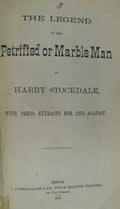
Guiseppe Sala, creator of the Marble Man, strikes again...
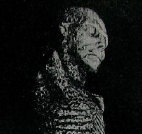
?
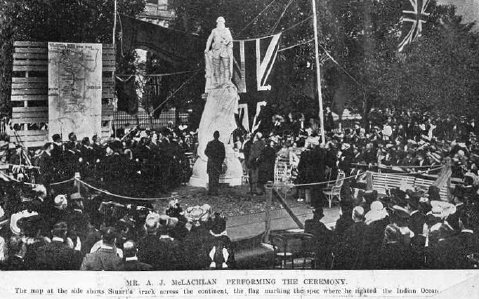
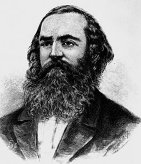
Unveiling the John McDouall Stuart statue
STUART STATUE: A.J. McLachlan performing the unveiling ceremony for the John McDouall Stuart statue erected in Victoria Square, Adelaide under the auspices of the South Australian Caledonian Society on June 4 1904; a large map at the side shows Stuart's route across Australia, a flag on the map marks the spot where he sighted the Indian Ocean.
John McDouall Stuart
(Explorer)


James White
(Sculptor)


Patrick Francis Foran Wholohan
(Head Master)

A Chip Off the Old Block




















